Experience The Breath-Taking Wilderness Of Vu Quang National Park
| K’Long K’Lanh – The Alluring “Smokey” Village In The Heart Of Dalat | |
| Conquer The Challenging Trekking Route Of Sa Mu Peak For A Weekend Getaway |
A remote, north-central haven for Vietnam’s rare bovine species, Vu Quang is one of the country’s least explored national parks. Nestled along the border with Laos, Vu Quang National Park is frequently bypassed by travelers. Superb for nature enthusiasts and travelers who want to escape from the crowds, visiting this remote corner may provide tourists with a chance to see the rare saola or giant muntjac species. With less tourism, visitors who brave the journey to Vu Quang will often be amongst only a handful in the area, and they can enjoy this little slice of heaven all to themselves.
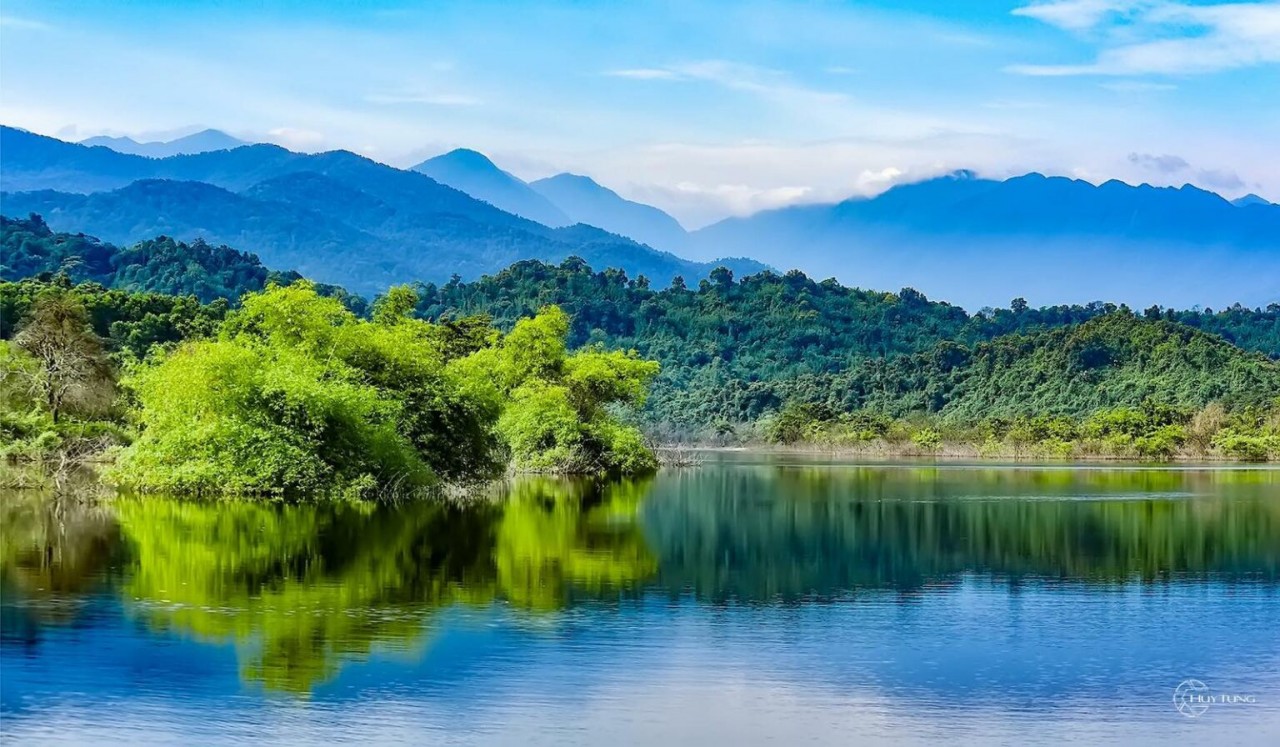 |
| The mountains reflect on the lake. Photo: Vu Quang National Park |
The national park is a wildlife-protected area in the Ha Tinh Province of Vietnam. Secluded and remote, the majority of the park consists of lowland forest ecosystems. Ha Tinh City is the closest large-sized urban area to the national park and traveling from the city will take about one hour when driving.
The park plays an important role in preserving biodiversity for the whole region, located in an important position in the Truong Son range. Functioning as a nature reserve for nearly two decades before receiving an upgraded title, Vu Quang was declared a national park in 2002. For Vietnam, this park is a historical relic as it once served as the site of the Phan Dinh Phung Revolutionary Base.
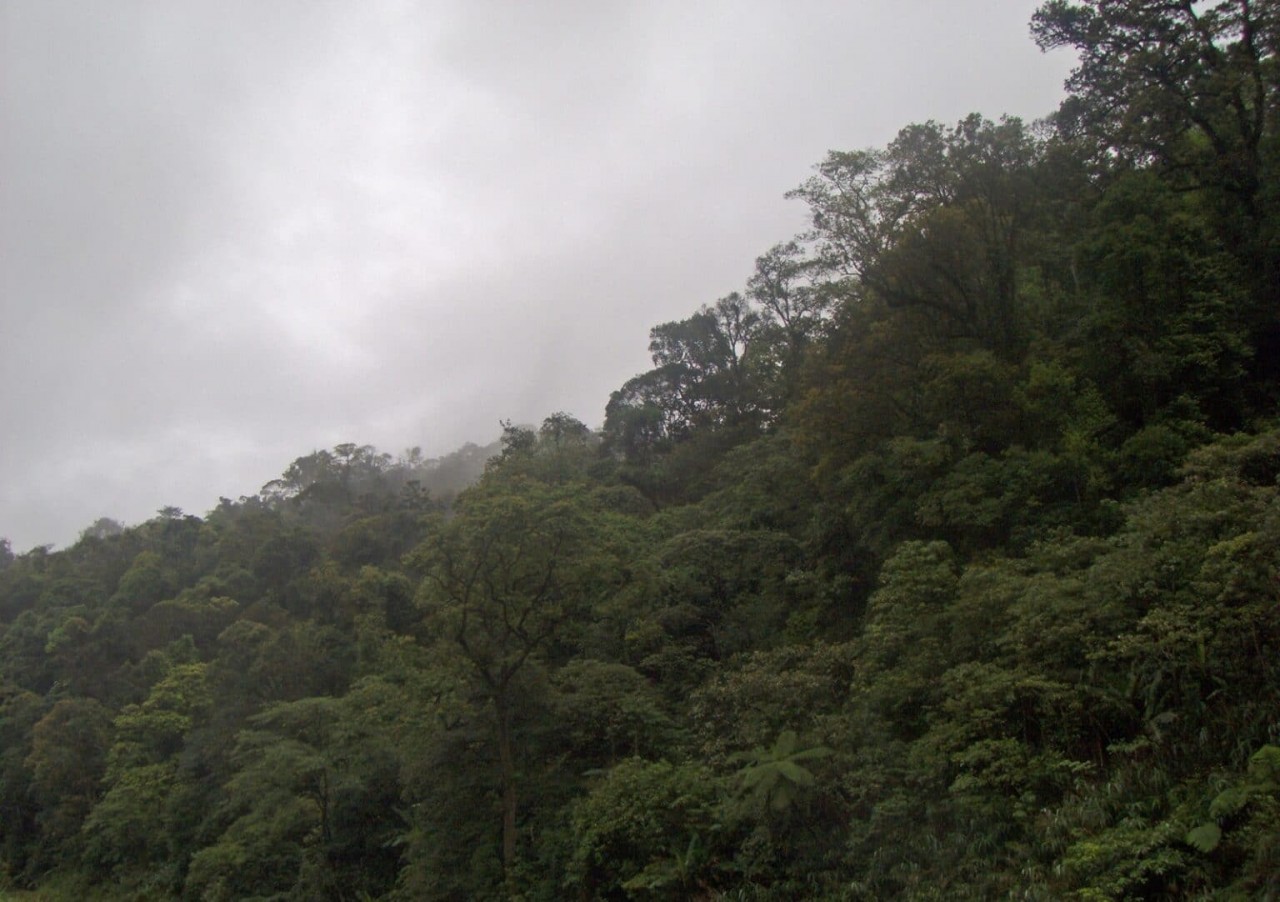 |
| The park plays an important role in preserving biodiversity for the whole region, located in an important position in the Truong Son range. Photo: Christopher Newsom |
This place has a lot of potential to promote the development of eco-tourism with wild and majestic landscapes that nature has bestowed such as Thang Day Waterfall, Cong Waterfall, Nam Cham Waterfall, Rao Rong Stream, and Ngan Truoi Lake. In addition, there are countless waterfalls, rocky beaches, streams, and other beautiful, clear blue lakes, creating a charming landscape.
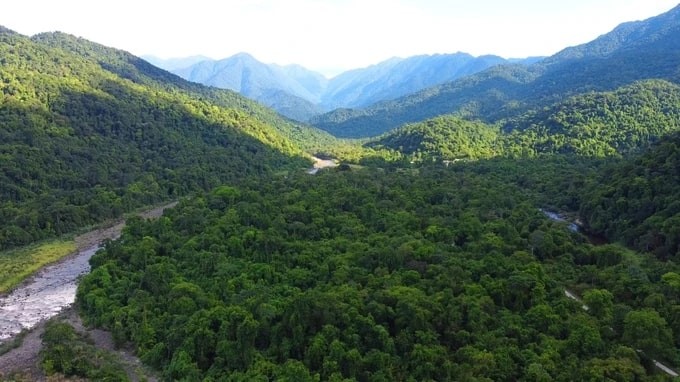 |
| A corner of Vu Quang National Park. Photo: Sai Gon Giai Phong |
Uncrowded, open to nature, and having less infrastructure, the main activity for visitors at Vu Quang is hiking. The average height of mountains in the park is 2,624 feet (800 meters), and due to the lower altitude, most of the trails are easy to moderate in difficulty.
Vu Quang National Park is also an ideal environment for domestic and international experts and scientists to investigate, conduct scientific research, share experiences, and explore nature.
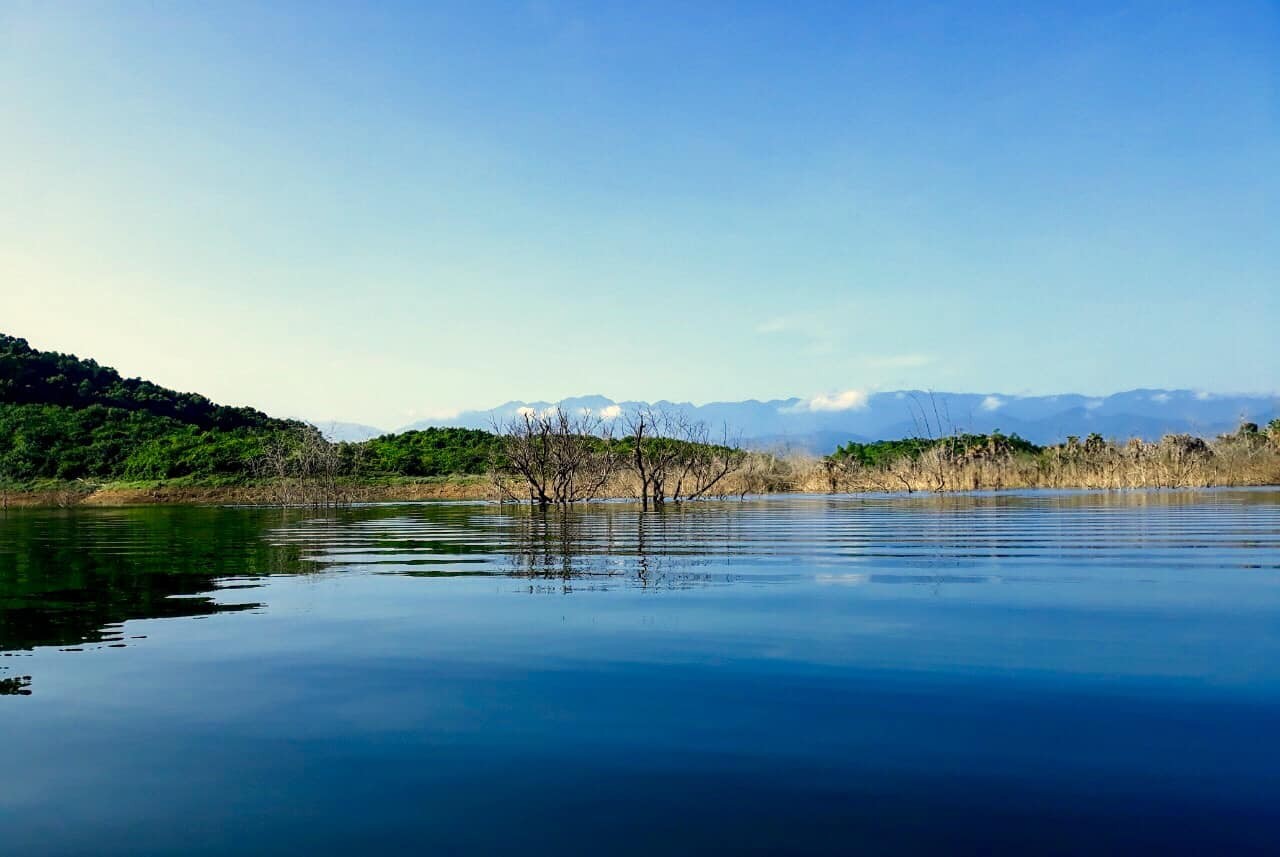 |
| Placid water in the park. Photo: Vu Quang National Park |
This place has also discovered, preserved, and developed a population of ancient and rare Po Mu trees dating from about 800 to 1,000 years, located at about 1,445m above sea level. Among them, there is a large tree with a base diameter of more than 2.2m, a height of about 30m, and a wide, lush canopy. Countless other rare and ancient forest products are hundreds of years old.
Vu Quang National Park is one of the most important biodiversity centers in Vietnam, and home to many valuable genetic resources for conservation. Among them are many endangered, rare plants and animals listed in the IUCN Red Book and Vietnam Red Book, which need to be prioritized for conservation and strict protection.
The national park’s most famous residents are the saola and giant muntjac, which are both bovine species. Occasionally referred to as the Asian unicorn, saola are near the top of the list of the world’s rarest mammals. Found only in the forests of the Annamite Mountain Range, visitors frequently head to Vu Quang National Park in hopes of seeing one in the wild.
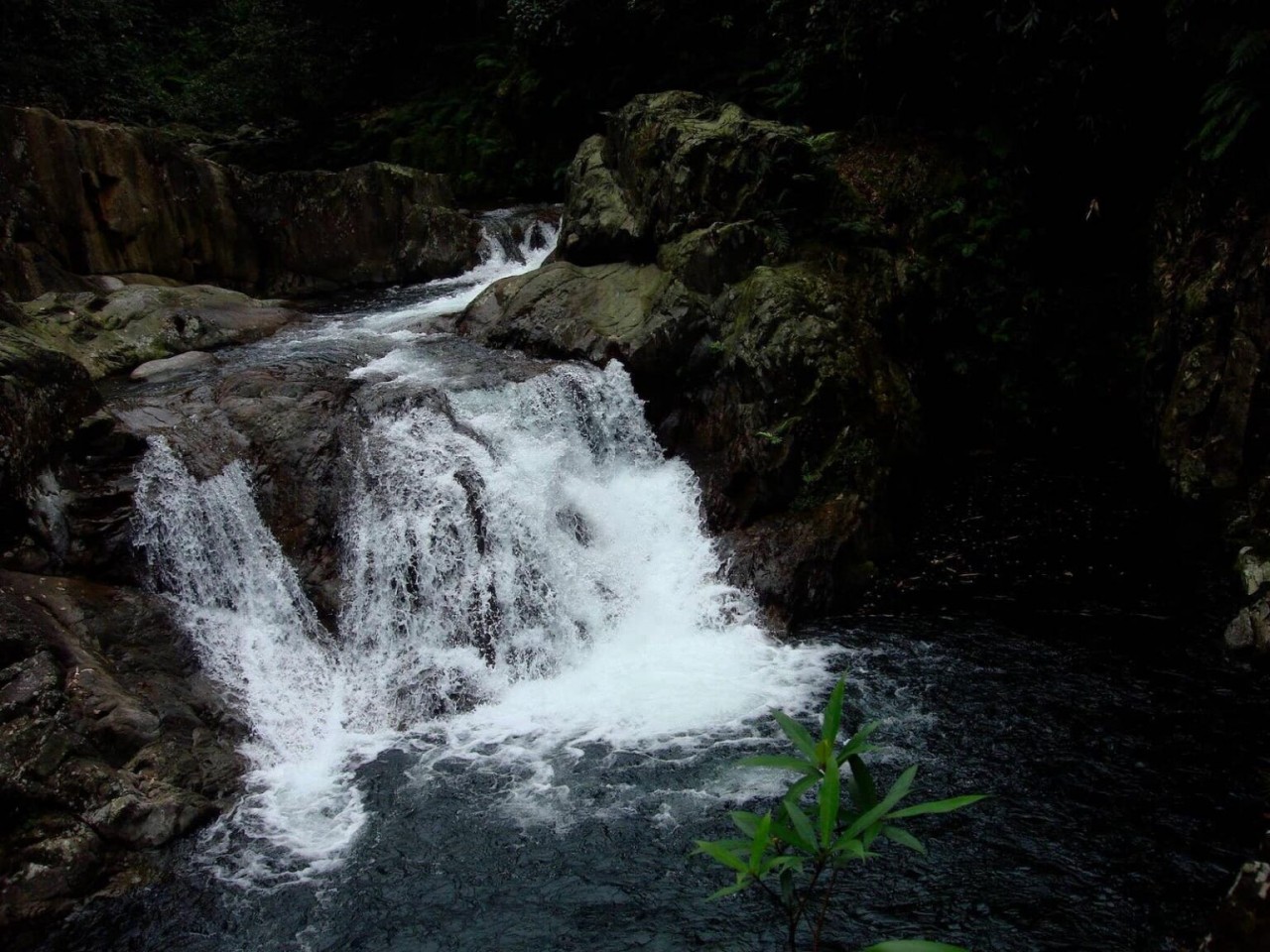 |
| A waterfall in the park. Photo: Vu Quang National Park |
Furthermore, there are various species of deer and antelope in Vu Quang. Unlike the two famous bovines, these animals do not have a worldwide recognized name, mostly due to being recently discovered. A few locally named species, all deer-like in appearance, are the Quang Khem, Mangden, and Linh Duong. Visitors may also catch a glimpse of several fish species, slow loris, or the warty pig.
Covered by forests, Vu Quang National Park is also a sanctuary for plants. Home to so many species that there is no documented list of everything within the park, it is safe to assume that there could be hundreds of variations. New plants may still be undiscovered, or like some of the animal species, be waiting for a scientific description.
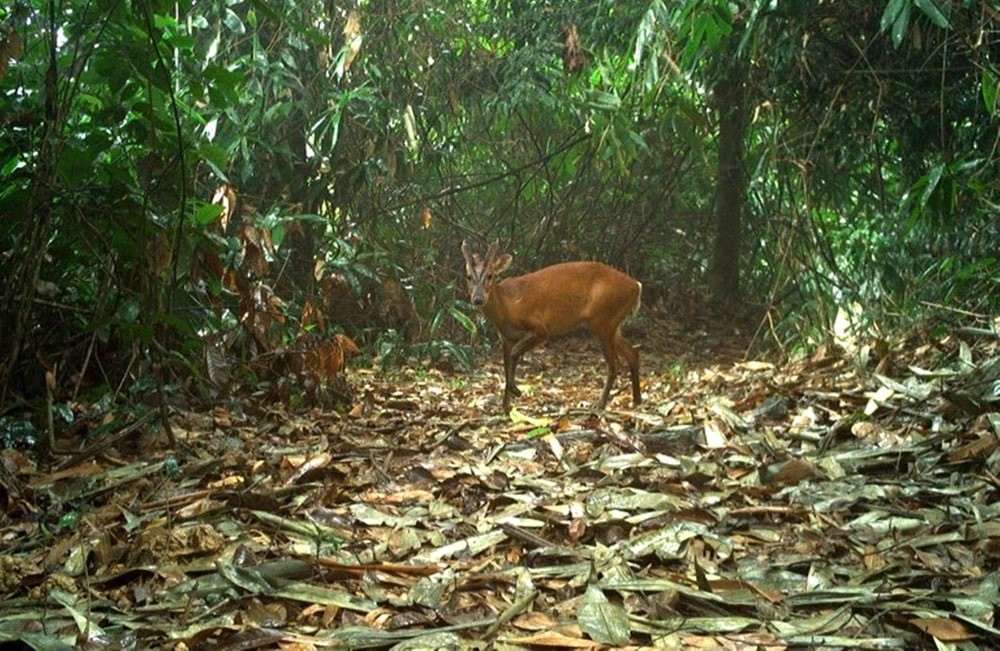 |
| There are various species of deer and antelope in Vu Quang. Photo: Sai Gon Giai Phong |
The national park experiences two weather seasons throughout the year: dry and wet. The dry season starts in late October and ends in March, while April to September is the wet season. During the dry season, the park is hot and humid with little rain, meanwhile, in winter, the wet season brings cooler temperatures and heavier rain.
The park’s most popular time for visitors is the dry season since the hiking trails will be dry and boat rides are not hindered by high winds or rain. Though hot and humid, there are plenty of streams, lakes, and rivers where visitors can cool off in Vu Quang. The park is also open in winter, but wet weather conditions can make hiking and boating more difficult.
 | German Tourists Fall in Love with Vietnamese Cuisine on 5-Star Train to Da Nang Samy, a German man, and his girlfriend have spent nearly two years traveling the world, tasting distinctive dishes at each destination. |
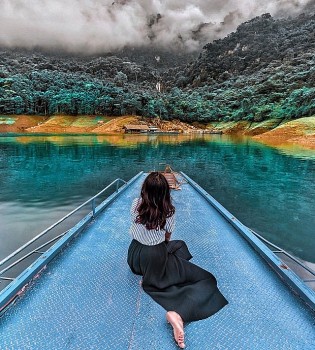 | Explore Na Hang –A Tranquil Natural Beauty For A Summer Holiday In Tuyen Quang Traveling to Na Hang in Tuyen Quang has recently become a favorite among many young people because it retains its pristine and romantic beauty, making ... |
Recommended
 Travel
Travel
Strategies for Sustainable Growth of Vietnam’s Tourism from International Markets
 Travel
Travel
Vietnam Strengthens Its Presence On The Global Tourism Map
 Multimedia
Multimedia
Phong Nha-Ke Bang National Park Named Top Adventure Travel Site
 Travel
Travel
Luxury Train From Hanoi To Hai Phong To Be Launched In May
 Travel
Travel
Phong Nha Named Top Budget-Friendly Travel Destination for Spring 2025: Agoda
 Travel
Travel
Four Indian Films Introduced to Lao Cai Audience
 Travel
Travel
Vietnam to Waive Visas for Citizens from 12 Countries until 2028
 Travel
Travel


